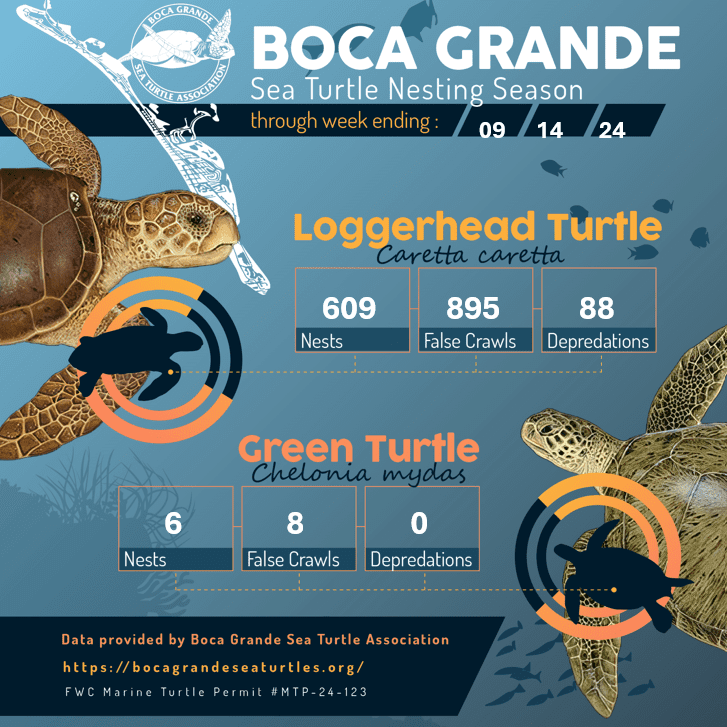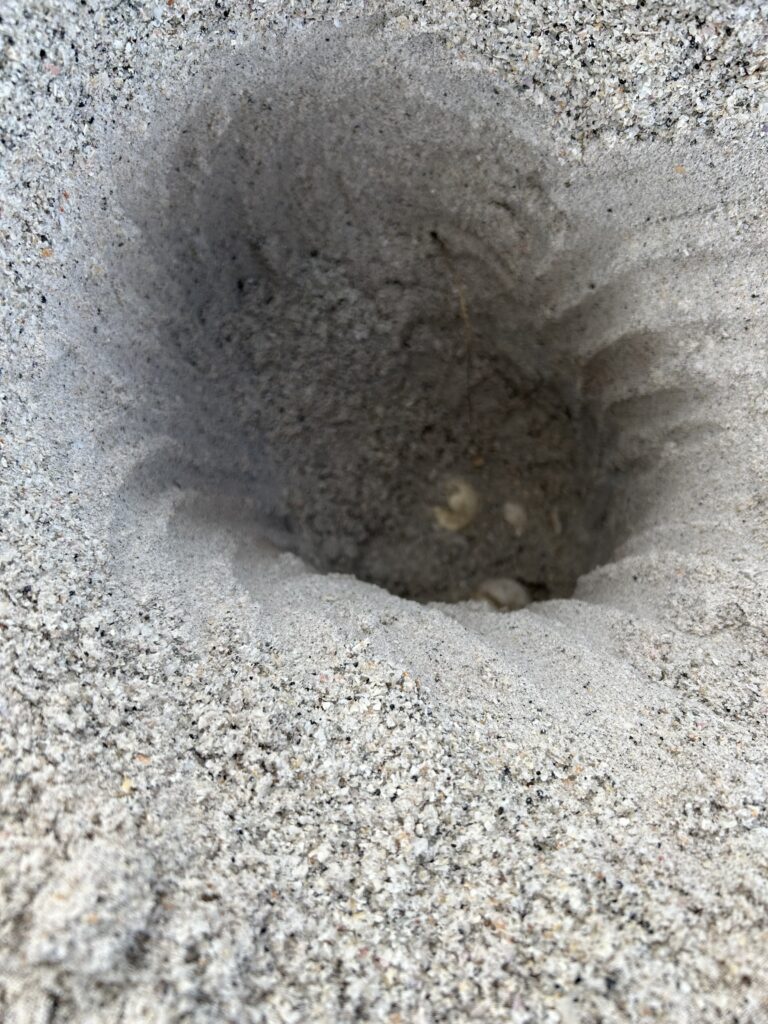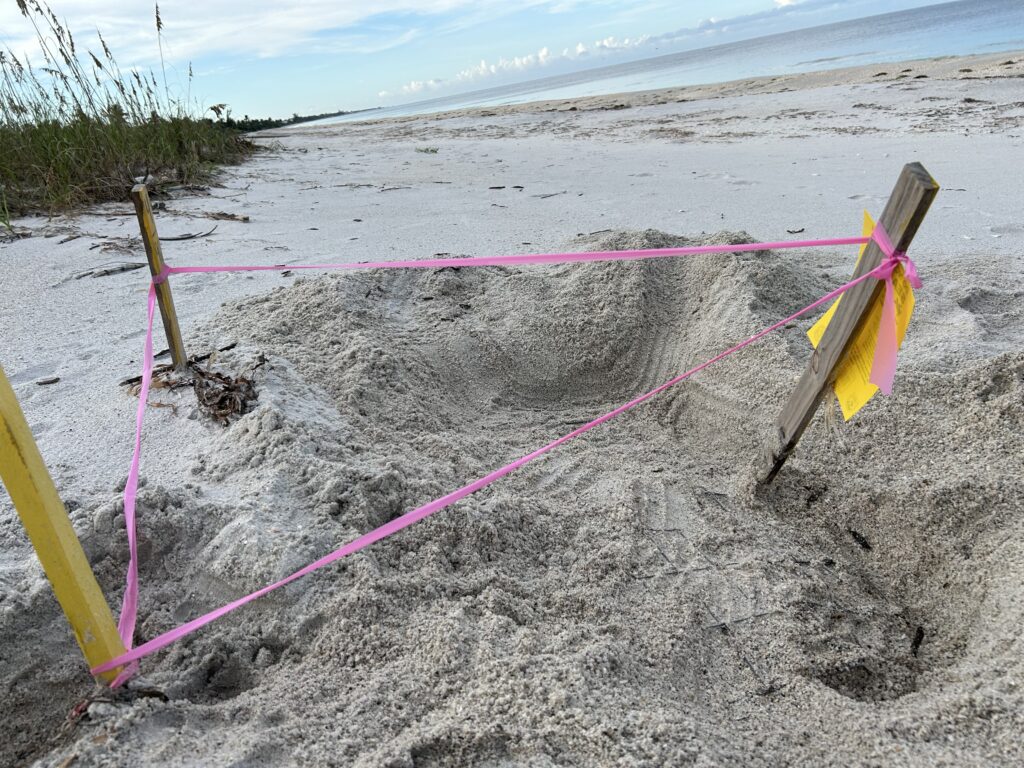Of 83 eggs, 36 had hatched. The day was looking up: Turtle Watch

BY ARLENE HALL, BGSTA SECRETARY
Only 17 nests remain as of September 14! Of those, 14 are loggerhead and three are green turtle nests. Since September 8, we have seen eight nests either hatch or reach the 70-day incubation mark and be closed. Some of these nests were inventoried per the sampling strategy determined by FWC, and all work was done in accordance with Marine Turtle Permit #24-123.

I happened to be the “lucky” patroller when three of the nests that had reached 70 days of incubation were slated to be excavated and inventoried in zones that I was covering that day. Inventorying a nest is fairly easy when you see distinctive signs that it hatched and can use those clues to determine where to dig, but for many nests that reach 70 days, there aren’t ANY visual cues to guide you other than the stakes turtle patrollers placed at the time the nest was laid months before. While you hope whoever marked the nest originally got the stake in the right place, sometimes those turtles can fool us, and the actual egg chamber is several feet or more away. It sometimes just comes down to luck. I must admit I was NOT feeling lucky that morning and was kind of dreading the work ahead.
The first nest I was to excavate had no signs of hatching, and in fact, had no remaining nest marking stakes. Due to the amount of wash over and accreted sand from Debby, the egg chamber could not be located, and the nest could not be inventoried. (Deep sigh). It looked like it was indeed going to be a long and frustrating morning, as I had feared.
At the next nest to be inventoried, Nest 96, no hatch had been observed or even suspected. In fact, the sand was very smooth with no signs of ANY activity around this nest area. Based on the appearance of its three stakes, Nest 96 had also been washed over by Debby and buried beneath eight to 12” of additional sand. After 30 minutes of clearing all that extra sand off the nest area by hand (tools can harm eggs or hatchlings), I could finally see the metal screen that had originally been placed on top of the nest to protect it from predators. After removing that, I figured I’d trust the judgement of the patroller who originally staked the nest – 10-year veteran and our permit holder Denise Juergens – and started digging smack in the center of the staked and screened area. BINGO! I found the egg chamber on the first try! Of the 83 eggs inside, 36 had hatched at some point with all the hatchlings managing to get away. The day was looking up!

On to the last inventory nest of the morning, Nest 104. This nest had also been washed over but had less accreted sand on it, maybe six inches or so. But it only had one stake and no screen, per protocol in that zone. That meant that while there was no “center” for me to target, I had to hope the turtle left good cues that morning in early July for patrollers Jen Fick and Bill Vogt so they were able to figure out where the egg chamber might be, and they could put the stake in the right place. Unlike the previous nest, this one had quite a bit of activity around it – coyote, dog, iguana, crab, and people tracks – but no indication it had ever hatched. I came up empty in the first hole I dug but when I moved about a foot away to dig down through a crab hole, I felt like I won the lottery. There were 85 total eggs in this nest, with 27 of them hatched.
It took a lot of effort and about two extra hours to get that inventory data for FWC on those two nests, but the fact there had been two successful hatches more than made up for all the bending, scooping, and sweating. It also took some great BGSTA teamwork, with the original patrollers using their training, experience and knowledge to place the stakes in the right places and with me trusting their skills and using my own training, experience and knowledge in determining where to dig. And finally, it took a bit of luck that these nests survived Debby and were successful. It turned out to be VERY satisfying morning!
• BGSTA (941) 999-7177
• FWC (888) 404-FWCC
At Florida State Parks:
Gasparilla: 42 loggerhead
Cayo Costa: 561 loggerhead, 1 green turtles
Don Pedro: 199 loggerhead. 28 green turtles
Stump Pass: 273 loggerhead, 1 green









